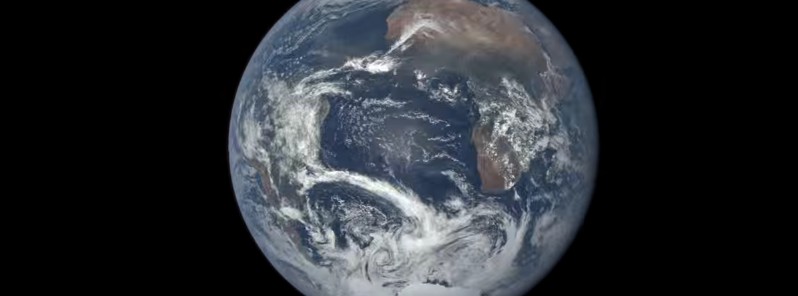A full year of life on Earth as seen 1.6 million km away

On July 20, 2015, NASA released to the world the first image of the sunlit side of Earth captured by EPIC camera on NOAA's DSCOVR satellite. The camera has now recorded a full year of life on Earth from its orbit at Lagrange point 1, approximately 1.6 million km (1 million miles) from Earth, where it is balanced between the gravity of our home planet and the Sun.
EPIC takes a new picture every two hours, revealing how the planet would look to human eyes, capturing the ever-changing motion of clouds and weather systems and the fixed features of Earth such as deserts, forests and the distinct blues of different seas. EPIC will allow scientists to monitor ozone and aerosol levels in Earth’s atmosphere, cloud height, vegetation properties and the ultraviolet reflectivity of Earth.
The primary objective of DSCOVR, a partnership between NASA, the National Oceanic and Atmospheric Administration (NOAA) and the U.S. Air Force, is to maintain the nation’s real-time solar wind monitoring capabilities, which are critical to the accuracy and lead time of space weather alerts and forecasts from NOAA.
DSCOVER is ready to go operational on July 27, 2016, taking over the role of monitoring solar storms as they approach Earth.

Video credit: NASA's Goddard Space Flight Center/Kayvon Sharghi

Commenting rules and guidelines
We value the thoughts and opinions of our readers and welcome healthy discussions on our website. In order to maintain a respectful and positive community, we ask that all commenters follow these rules.